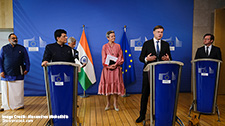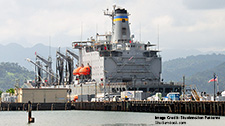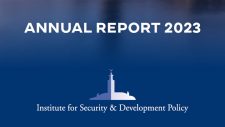Whither the OSCE and the Euro-Atlantic & Eurasian Security Community?
Kirsten van Kaathoven
The latest OSCE Ministerial Council in Dublin, on December 6–7, 2012, has shed light on the challenges and opportunities that the organization will continue to face, as well as on the security community debate. This policy brief will outline recent developments and will discuss the potential comparative advantages that security community-building institutions (including OSCE, NATO, EU and the Council of Europe) might have in developing the envisioned Euro-Atlantic and Eurasian security community. It will argue that in order to be effective, such efforts need to be both prioritized and inclusive.
Related Publications
-
Trade, Connectivity and Supply Chains in EU-India Relations
In the decade and a half since 2007 when the EU and India first started their FTA negotiations, the world economic order has undergone a sea change. During that period, […]
-
Needed, a Framework to Protect Undersea Cables
In the data-driven world we live in, submarine cables are the arteries that connect nation-states and their people in literally every human activity, including trade, commerce, entertainment, and social interactions. […]
-
India-Japan-Philippines: A Strategic Maritime Trilateral or More?
Regional states like India, Japan, and the Philippines have been seeking cooperative solutions with other middle powers that can both counter the Chinese influence and fulfill other economic as well […]
-
What I heard in Munich: Europe gets a brutal awakening- Anna Wieslander
The recipe of the day at the Munich Security Conference (MSC) was to strengthen “the European pillar” in NATO, a concept that has been floated for many years but with […]
-
ISDP Annual Report 2023
ISDP’s Annual Report for the year 2023. We look back on 2023, a year in which tensions and conflicts captured the strategic space in ISDP’s focus areas, making headlines around […]




